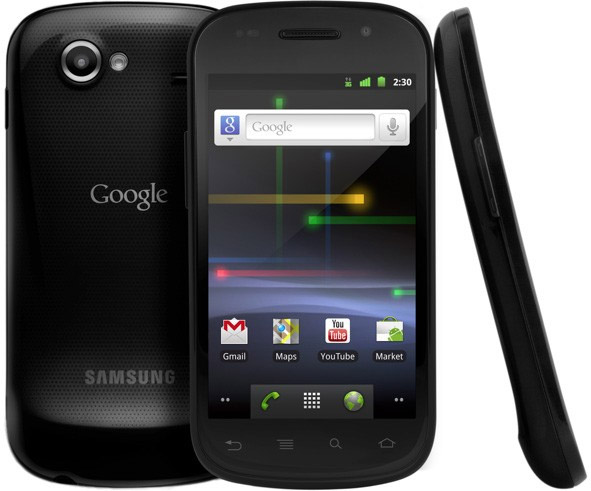Samsung Nexus S Reveals Speedy Android 2.3: Review

Google’s Samsung Nexus S is a speedy entrant running Android 2.3, the Gingerbread build for the OS
Last month Google sent me the Samsung Nexus S, the first Android 2.3-based smartphone and the follow-up to the ambitious but ill-fated Nexus One launch at the beginning of the year.
With hardware built by Samsung and software built and or assigned by Google, the Nexus S launched from Carphone Warehouse and Best Buy in the UK on 22 December.
The unlocked phone (no SIM card) costs £429.99, and is also available from free with a £30 per month contract. Google offers full specs here.
I’ve tested every Droid phone since the original Motorola Droid last November, as well as the Samsung Fascinate and Continuum, so I’m very comfortable with Android handsets. I tested my Android 2.2-based Droid X side-by-side with the Android 2.3-based Nexus S to discern any speed changes.
Since Google boasts that every new Android build is noticeably faster than the previous one, I was anxious to put it to the test with the Nexus S Google sent me.
Hardware, Assorted Specs
The Nexus S is a gorgeous piece of hardware, but I feel as if I say that about every Android handset Samsung pumps out. As with the Galaxy S line, the Nexus S uses black bezeled plastic behind a glass display.
The Nexus S display and touchscreen is 4 inches of bright, crisp Super AMOLED 480-by-800 resolution. While the Fascinate and Continuum are flat, the Nexus S is slightly contoured. Google alleges this makes it more comfortable to hold. I didn’t notice any comfort boost.
What I did notice was that the device — which is 4.8 inches long, 2.5 inches wide and less than half an inch thick — feels great in the hand. I tend to like a heavier phone, but the Nexus S has a nice 4.5 ounce weight.
The camera is a 5-megapixel, rear-facing, auto-focus gizmo of average quality, with some blurriness. The camera software was overhauled for Android 2.3, thereby providing a nice, framed user experience for picture-taking. Picture-management icons test to the right to let users adjust the feature functionality. Video capabilities, taken at 720×480 resolution, were subpar compared to my HD Droid X shoots.
There is also a front-facing VGA camera for video chats, but results were grainy. The video-chat capability on mobile devices really needs work.
Battery life, which purports to support 6.7 hours of talk time on 3G (14 hours on 2G) proved great, as the 1500mAh unit lasted a full day with heavy use. I played a lot of Angry Birds on this phone and am pleased with the juice. The Nexus S has a 1GHz processor like other high-end Android units.
There’s also 16GB of iNAND internal storage, so you shouldn’t be lacking memory. But there is no external memory option, so you could really put your phone to test with enough downloads.
User Interface, Management Tools
Nexus S is the first smartphone to run Android 2.3, which in addition to the faster performance of a new operating system build allegedly has a better user interface. I tested this interface against my Droid X. Some differences were very obvious; some were subtle.
Android 2.3 was redesigned to provide a crisper contrast of letters and menus against the black background, which was readily apparent in the notification bar, menus and on the phone’s dialer, where the numbers are smaller and farther apart.
The Android 2.3 soft keyboard is redesigned for faster text input and editing. The keys are reshaped; whereas the Droid X has longer, narrower keys, the keys in Android 2.3 have been shortened and given a tad more space. It’s supposed to provide better typing, but I’m so used to the Droid X that I couldn’t tell the difference.
There is a one-touch copy and paste feature. When entering text or viewing a web page, you can select a word by using press-hold and then copying it to the clipboard and pasting it there.
Pressing on a word enters a mode where you can move arrows that bracket the word to new positions and then copy the bounded area by pressing anywhere in the selection area. You can slide-press to enter a cursor mode, and navigate by dragging the cursor arrow.
Google has also provided Android 2.3 with more control over power management. To save battery life, the operating system manages apps that are keeping the device awake for too long or that are consuming CPU while running in the background.
There is a Manage Applications button in the Options menu in the home screen and app launcher, which shows users applications on their phone and the storage and memory being used by each.